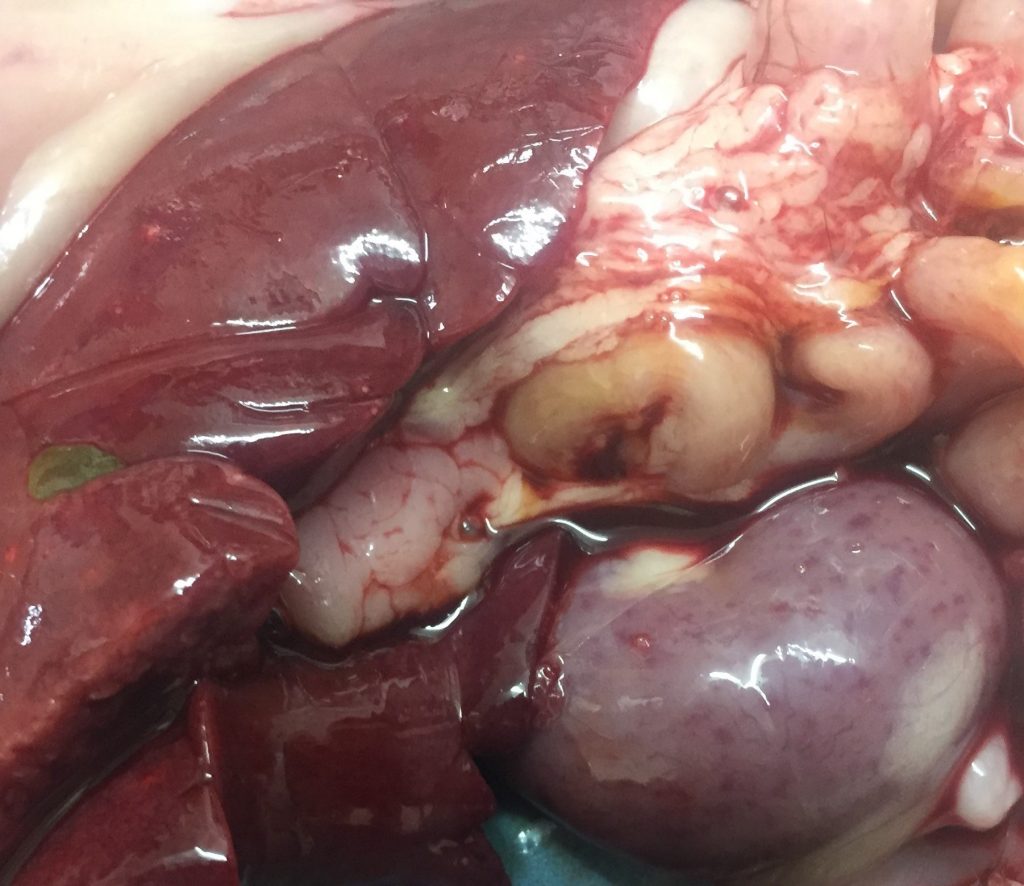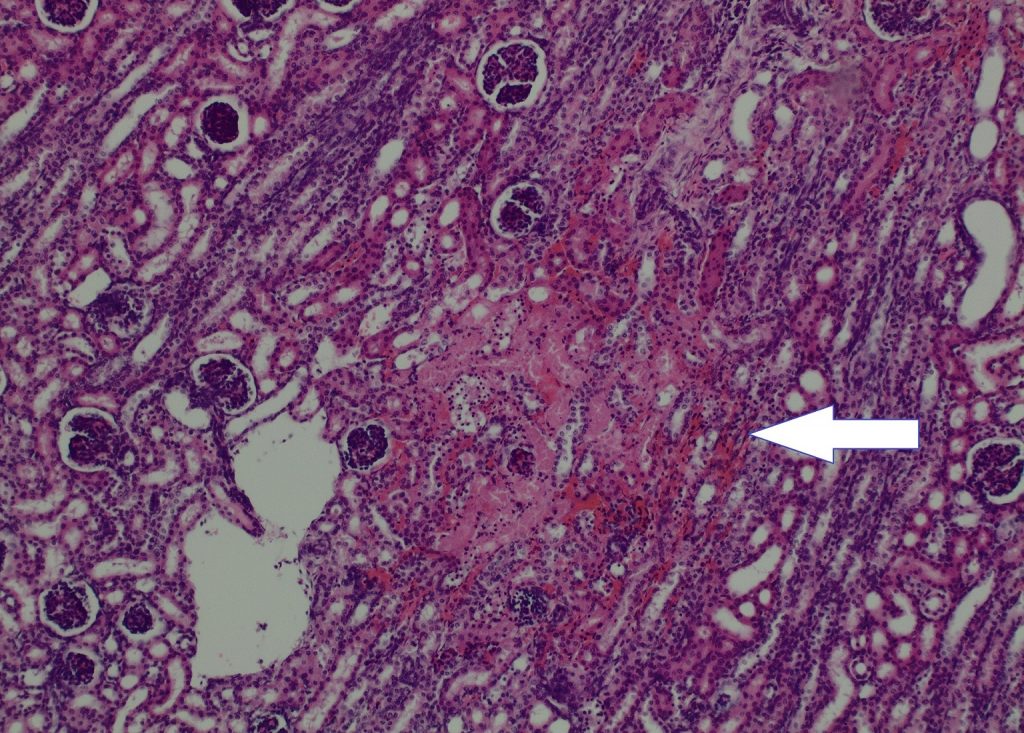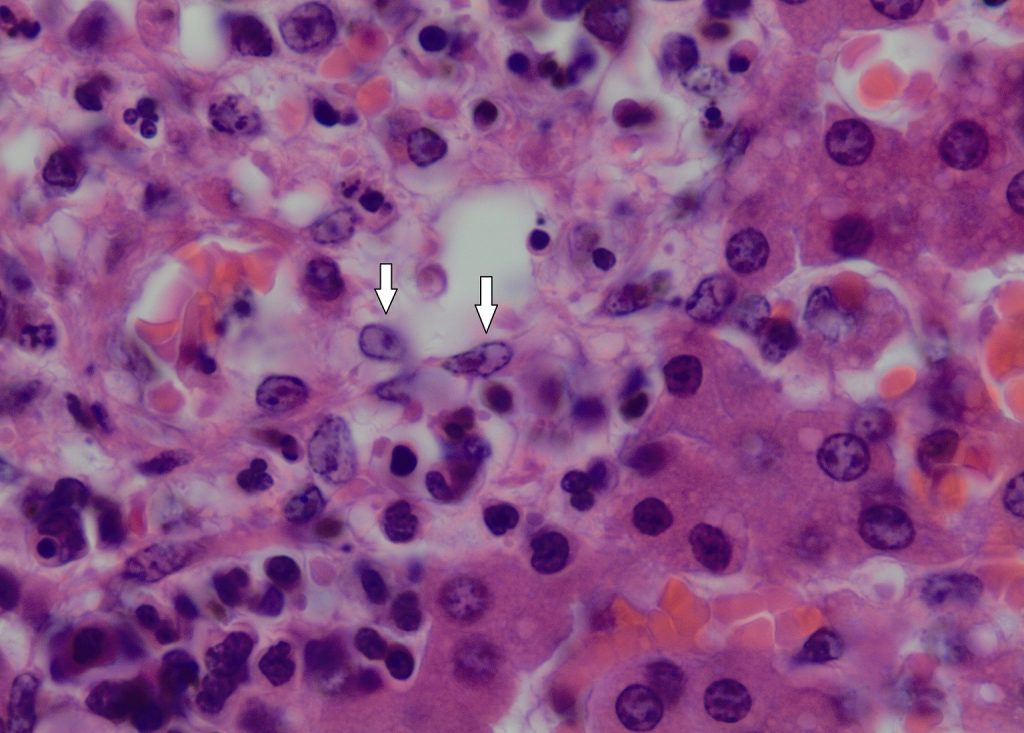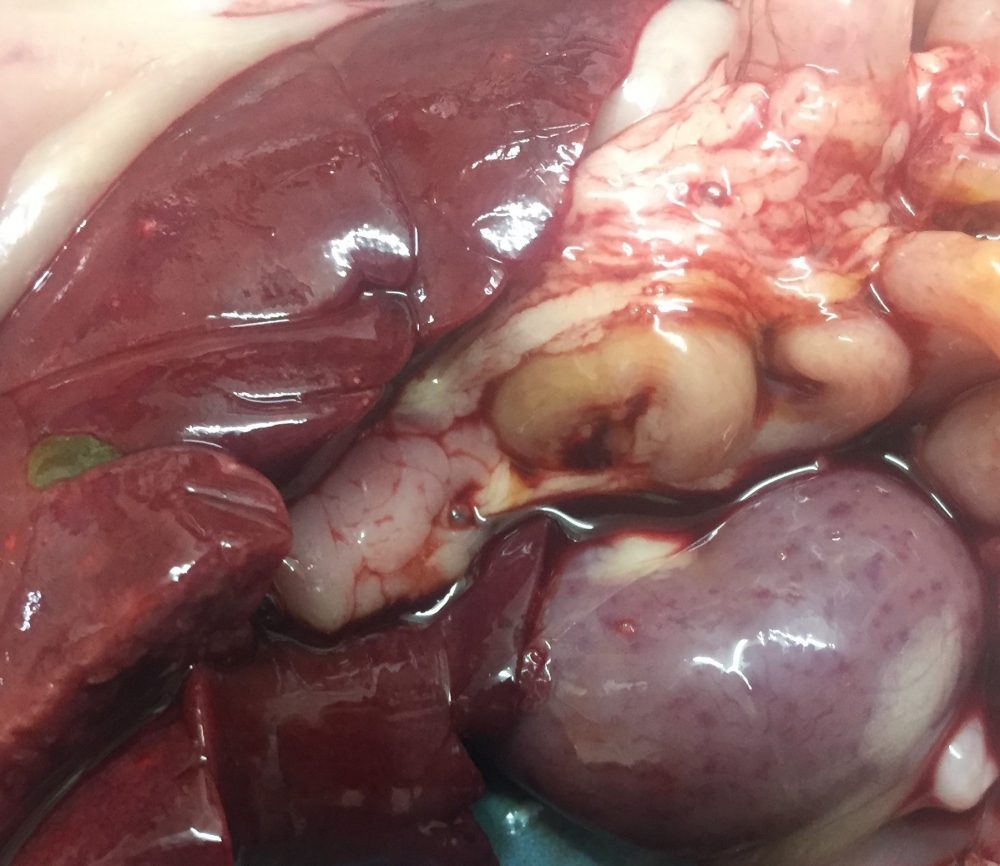
CATHY HARVEY
Clinical history:
Three-week-old puppies developed clear nasal and ocular discharge, but were still relatively bright and eating. The puppies were from the first litter of a dam that had one vaccination at 6 months of age. Two of the puppies faded and died over the weekend, and the other two were presented for veterinary examination, with one dying on arrival at the clinic. The surviving puppy was dyspnoeic and crying, with pale mucous membranes, a temperature of 36.8°C and a very mild watery discharge from the nose.
Post-mortem of the dead puppy revealed petechial haemorrhages in the small intestines and kidneys, and possibly liver (see Figure 1). Some of the lung lobes were dark red and consolidated.
Laboratory testing:
Multiple fixed tissues were submitted to the laboratory. Histopathology showed multifocal areas of acute necrosis and haemorrhage (see photograph 2), and intranuclear eosinophilic viral inclusions (see photograph 3) within the epithelial cells of the kidney, liver, lung and intestines.


Diagnosis:
These are pathognomonic lesions for canine herpes virus-1 infection.
Discussion:
Canid herpesvirus-1 (CaHV-1) infection in puppies causes disseminated focal necrosis and haemorrhages, with amphophilic intranuclear inclusions bodies in epithelial cells of parenchymal organs, including the liver, kidney and lung (as in this case).
Manifestation of disease is dependent on the route of exposure and age of the host.
In adults or older puppies, CaHV-1 may produce mild upper respiratory infection, and inapparent infections are common. Infection of the neonate is possible by various routes. It may be transmitted from external lesions of genital infection to the pup as it traverses the birth canal, from initial maternal infection, or by recrudescence of existing latent virus.
CaHV-1 infection is regularly fatal for new born puppies. Resistance to the disease is sharply age-related: pups exposed after 2 weeks but up to 8 weeks of age will not develop severe illness. The disease has an incubation period of 3 to 7 days, after which the affected puppies rapidly sicken and die, usually within 2 days. CaHV-1 can cause abortion, stillbirth and infertility, depending on the time of gestation and inoculation of bitches with the virus.
Reference: Jubb, Kennedy and Palmer’s Pathology of Domestic Animals, Sixth Edn. 2015.
Many thanks to Nena Nepia from The Vet Centre Maungaturoto, for allowing us to use this as a case report, and for submitting the great history, photos and gross description of the necropsy and multiple well fixed tissues for histopathology.

